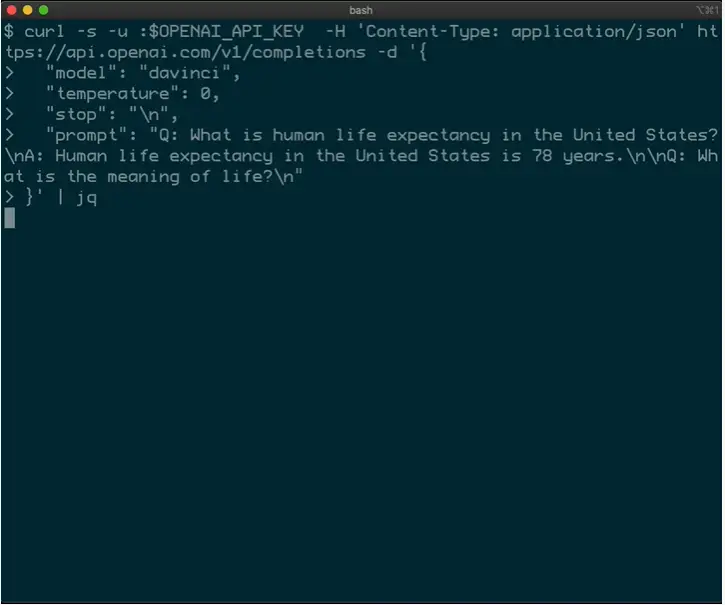GPT-3:OpenAI开发的最流行的自然语言模型

GPT-3是什么?
GPT-3是OpenAI开发的一种自然语言模型,于2020年5月发布,GPT-3可以实现搜索、对话、文本创作和其他高级 AI 功能。GPT-3使用了1750亿个参数来训练模型和2048个代币构成的长篇上下文,此前从未有类似的模型达到过如此大的数据量。
2020 年 6 月 11 日,OpenAI 开始向公众提供 GPT-3 API,随后有超过300个应用基于GPT-3模型开发。由于GPT-3 生成的文本质量非常高,以至于很难区分它是人写的还是机器写的,OpenAI 研究人员和工程师在 2020 年 5 月 28 日发表的GPT-3 原始论文中,他们警告了 GPT-3 的潜在危险,并呼吁进行研究以降低风险。
价格:$0.0004 /1000个代币
功能:AI聊天机器人
分享 GPT-3
GPT-3怎么用?
GPT-3可以用来处理所有基于文本生成的内容,原始的GPT-3模型没有直接开放给普通用户,主要提供API给开发者创建应用。微软于 2020 年 9 月 22 日宣布,它已获得“独家”使用 GPT-3 的许可,但只有 Microsoft 可以访问 GPT-3 的底层模型,其他人需要使用公共 API 来接收输出。
开发者使用流程:
- 注册OpenAI账号
- 登陆OpenAI API平台
- 阅读GPT-3的API文档
- 在右上角账户里面可以看到API Key的创建流程以及价格相关信息
- 如果有疑问可以联系OpenAI销售
GPT-3 Playground
GPT-3 Playground是GPT-3 API的测试页面,可以输入任何文本进行对话,测试GPT-3返回的结果。需要注意以下提醒:
- 每个API账户前3个月有18美元的免费使用额度,超过以后需要付费测试。
- GPT-3模型默认的训练数据截止于2021年末,因此,2021年后的数据可能会不准确。
- 可以邀请团队其他用户一起在GPT-3 Playground测试
GPT-3的功能
- 构建Codex 模型,这是 GitHub Copilot 的基础
- 使用GPT-3根据文本生成特定代码
- 使用GPT-3构建在线聊天机器人
- 使用GPT-3创建营销文案
- 使用GPT-3写新闻文章
- 使用GPT-3进行健康诊断
GPT-3应用场景
Chinchilla AI 技术在应用层面有很大的潜力,参考同类型的产品ChatGPT就能得到答案:
- 创建聊天机器人
- 文本内容创作
- 游戏或者剧本创作
- 代码构建
- 医疗或者法律助手
随着越来越多的开发者将AI技术应用到他们的产品中,这个领域会变得越来越有趣,也会改变人们的生产和生活。
GPT-3应用案例
- AI Dungeon:基于GPT-3生成的文本冒险游戏
- Jasper AI:基于GPT-3为营销人员和文案编辑生成指定内容
- Fable Studio:使用 GPT-3 来帮助推动他们的故事驱动的“虚拟人物”
GPT-3潜在危害生成错误信息
- 被用于发送垃圾邮件
- 被用于网络钓鱼
- 滥用法律和政府程序
- 欺诈性学术论文写作
GPT-3 API的价格
更多信息可以参考OpenAI官方说明
模型 | 基础版 | Babbage | Curie | Davinci |
|---|---|---|---|---|
价格 | $0.0004 / 1000个代币 | $0.0005 / 1000个代币 | $0.0020 / 1000个代币 | $0.0200 / 1000个代币 |
功能 | 最快的自适应数据分析(Ada) | / | / | 最具影响力 |
Token是什么?
您可以将Tokens视为用于自然语言处理的字词片段。 对于英文文本,1 个token大约为 4 个字符或 0.75 个单词。 作为参考,莎士比亚全集约有 900,000 字或 120 万个tokens。
GPT-3的历史
- 2018 年 6 月 11 日,OpenAI 发布了一篇题为“通过生成式预训练改善语言理解”(”Improving Language Understanding by Generative Pre-Training”)的论文,其中他们介绍了生成式预训练 Transformer (GPT)。
- 2019 年 2 月 14 日,OpenAI 首次公布了 GPT-2。
- 2020 年 5 月 28 日,OpenAI 在一篇论文中首次提到了 GPT-3。
- 2022年11月30日OpenAI基于GPT-3的继任模型GPT-.3.5进行微调后创建了一个全新的应用ChatGPT,普通用户可以免费使用,随后快速流行于全世界。
- 有报道说GPT-4将在2023年某个时间对外公布。
关于GPT相关的技术问题可以参考GPT-3原始论文,实际上OpenAI对于GPT-3的技术细节对外公布的信息很少,可以去GPT-3 GitHub栏目查看相关帖子。
